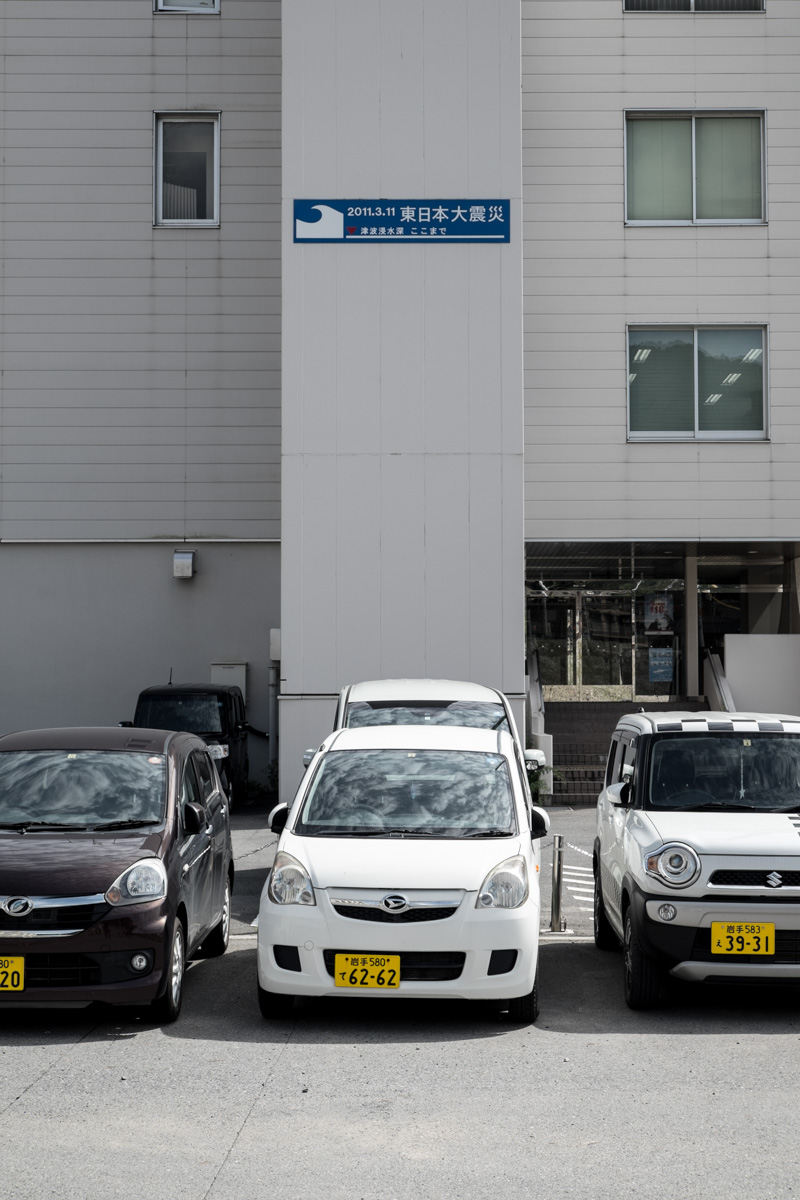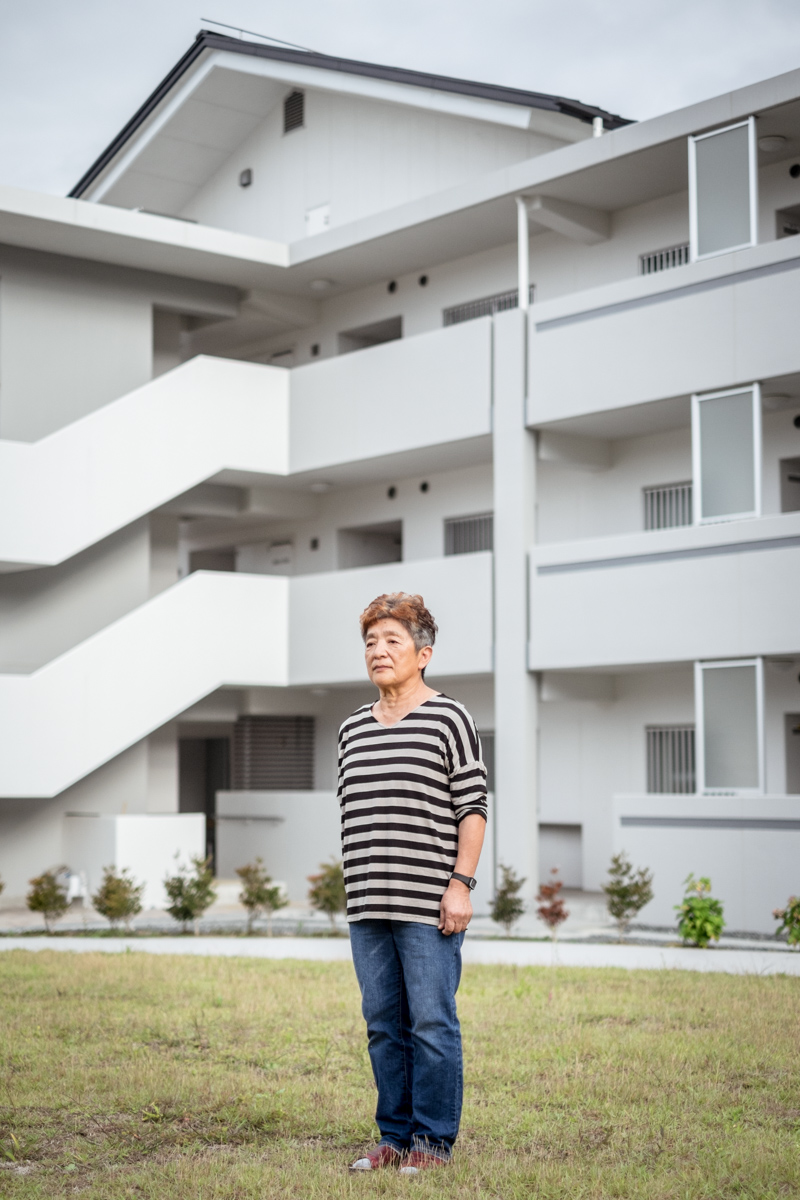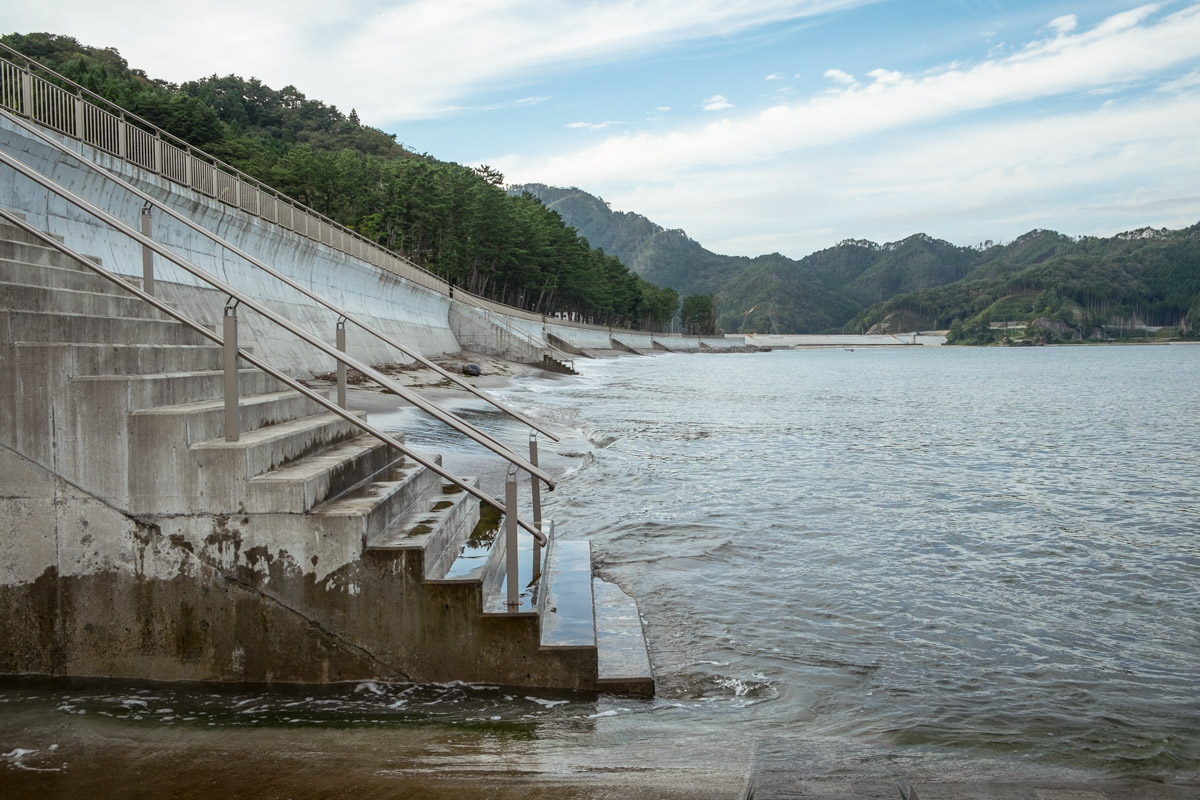
Ishinomaki (Japan), September 11th 2018. A photograph of an archive photo showing the immediate aftermath of the Great East Japan Earthquake and subsequent tsunami in the town of Ishinomaki.
| Album | Rebuilding Tohoku |

Rikuzentakata, September 13th 2018. Reconstruction works undergoing in the flat land that used to be Rikuzentakata’s city centre before the 2011 earthquake and tsunami. In the background the newly built concrete seawall erected by the Japanese government to protect the area for potential future tsunamis.
| Album | Rebuilding Tohoku |

Kamaishi (Japan), September 12th 2018. A sign placed on the wall of a local factory marks the height reached by the tsunami waves in Kamaishi on the 11th march 2011.
| Album | Rebuilding Tohoku |

Kamaishi (Japan), Sept 12th 2018. Temporary house where people displaced by the 2011 tsunami are hosted. As of September 2018, more than 7 years after the 2011 earthquake and tsunami, about 30,000 people are still living in temporary shelters.
| Album | Rebuilding Tohoku |

Rikuzentakata (Japan), September 13th 2018. Sato Tomoko (73, from Rikuzentakata) poses for a portrait in front of the condo complex where she resides in Rikuzentakata.
The 2011 tsunami erased Rikuzentakata, destroying 582 out of its 600 houses. With the reconstruction, the familiar 1-storey houses were replaced with condo complex like the one in the photograph. Ms. Tomoko was elected by the residents as representative person for the house complex.
| Album | Rebuilding Tohoku |

Ishinomaki (Japan), Sept 11th 2018. The remainings of a house erased by the 2011 tsunami.
| Album | Rebuilding Tohoku |

Near Rikuzentakata (Japan), September 11th 2018. A spider on his net hanged between two temporary shelter houses.
As of September 2018, more than 7 years after the 2011 earthquake and tsunami, about 30,000 people are still living in temporary shelters.
| Album | Rebuilding Tohoku |

Ishinomaki (Japan), September 11th 2018. An archive photo of the city before the tsunami, and the city nowadays.
| Album | Rebuilding Tohoku |

Ishinomaki (Japan), September 11th 2018. Eiichi Honma, a Ishinomaki resident and survivor from the 2011 catastrophe, poses for a portrait. He takes care of a tsunami memorial in town.
| Album | Rebuilding Tohoku |

Rikuzentakata, September 13th 2018. Reconstruction works undergoing in the flat land that used to be Rikuzentakata’s city centre before the 2011 earthquake and tsunami. In the background the newly built concrete seawall erected by the Japanese government to protect the area for potential future tsunamis.
| Album | Rebuilding Tohoku |

Rikuzentakata (Japan), Sept 13th 2018. Trucks working on the reconstruction undergoing in the flat land that used to be Rikuzentakata’s city centre before the 2011 earthquake and tsunami.
| Album | Rebuilding Tohoku |

Unosumai (Japan), September 12th 2018. The newly built 12.5 metres high seawall constructed by the Japanese government to protect the area for a potential future Tsunami. Some 395 km of walls have been built along the cost of Tohoku, at a cost of 1.35 trillion yen ($12.74 billion).
| Album | Rebuilding Tohoku |

Kamaishi (Japan), September 12th 2018. Maintenance work in the brand new rugby stadium in Kamaishi, the Recovery Memorial Stadium.
Kamaishi was heavily damaged by the 2011 earthquake and tsunami, which killed 1,250 city residents. The stadium was built to host the upcoming 2019 Rugby World Cup. Both the local authorities and central government supported this infrastructure, and pushed to host the Rugby World Cup as a sign of the rebirth of Tohoku.
| Album | Rebuilding Tohoku |

Watari (Japan), September 10th 2018. Megumi Hikichi (50, from Watari) poses for a portrait in the headquarter of Watalis, a project she founded in 2011 after the earthquake and tsunami.
Watari was heavily damaged by the 2011 catastrophe: more then half of the town was flooded and the local economy (based on fishing and agriculture) suffered huge losses. Ms. Hikichi’s project, Watalis, recycles old “kimonos” (typical dresses donated from all over Japan) to create small bags called “fuguro”.
| Album | Rebuilding Tohoku |

Near Sanriku (Japan), September 13th 2018. The newly built 12.5 metres high seawall constructed by the Japanese government to protect the area for a potential future Tsunami. Some 395 km of walls have been built along the cost of Tohoku, at a cost of 1.35 trillion yen ($12.74 billion).
| Album | Rebuilding Tohoku |

Kamaishi (Japan), Sept 12th 2018. A man walking near the newly built sea wall, erected by the government to protect the city from possible future tsunamis.
| Album | Rebuilding Tohoku |

Watari (Japan), Sept 10th 2018. A stair reaching the top of the old anti-tsunami wall protecting the city. It was not enough to defend it from the 2011 tsunami.
| Album | Rebuilding Tohoku |

Unosumai (Japan), September 12th 2018. Mr. Ryokawa (77, from Unosumai) poses for a portrait while looking at the ocean in Otsuchi bay.
The 2011 tsunami hit the building where he used to live in Unusumai, and flooded it up to the 2nd floor. His house was at the 3rd floor. He survived by reaching the rooftop and waiting 2 days for the rescuers’ helicopter to come.
| Album | Rebuilding Tohoku |

Unosumai (Japan), Sept 13th 2018. A memorial to the victims of the 2011 tsunami.
| Album | Rebuilding Tohoku |

Near Watari (Japan), September 10th 2018. Even though an ordinance dating back to the immediate earthquake aftermath still forbids bathing in the ocean along the coast of Tohoku, a man swims close the newly build seawall near the town of Watari.
| Album | Rebuilding Tohoku |
